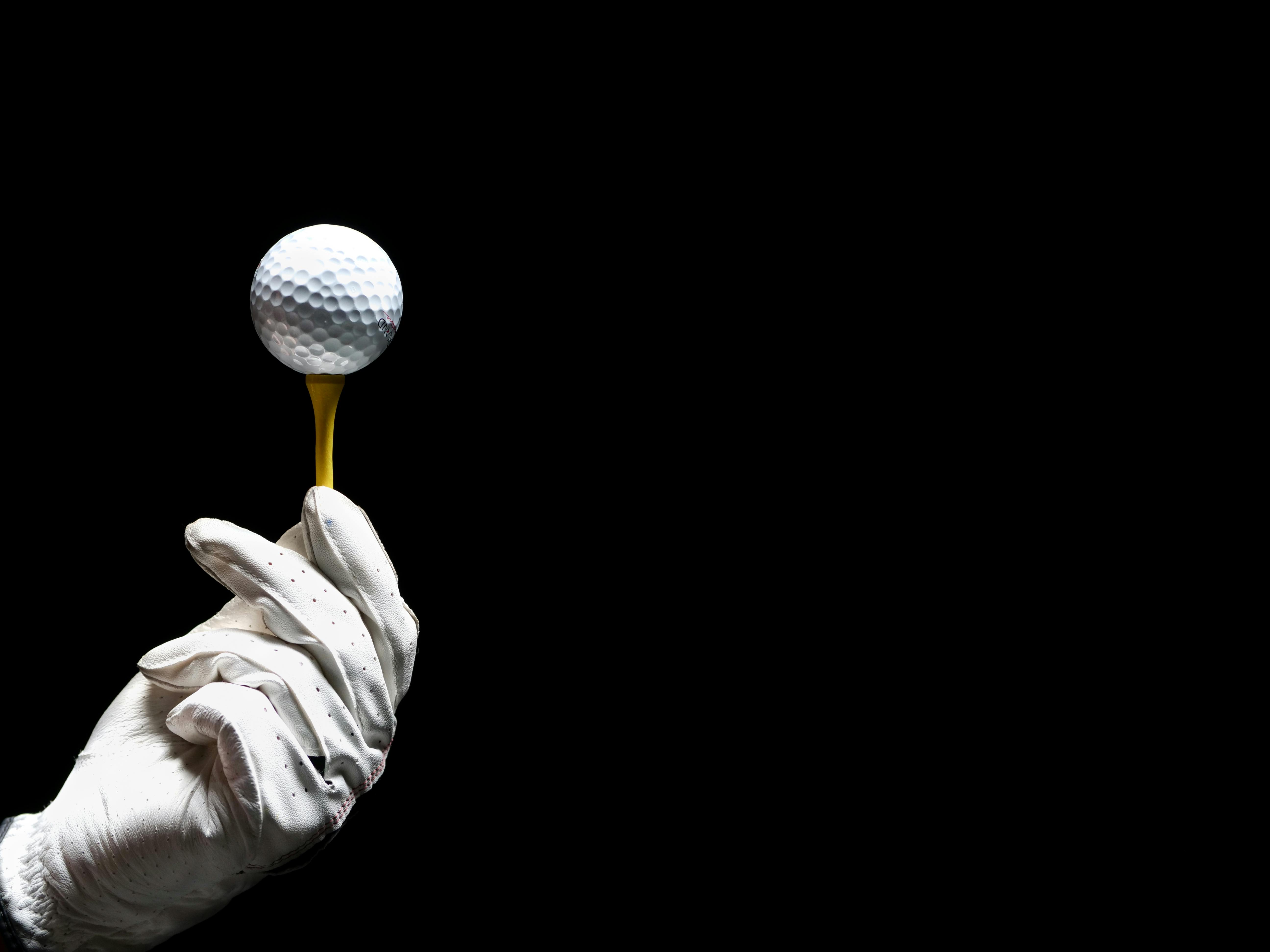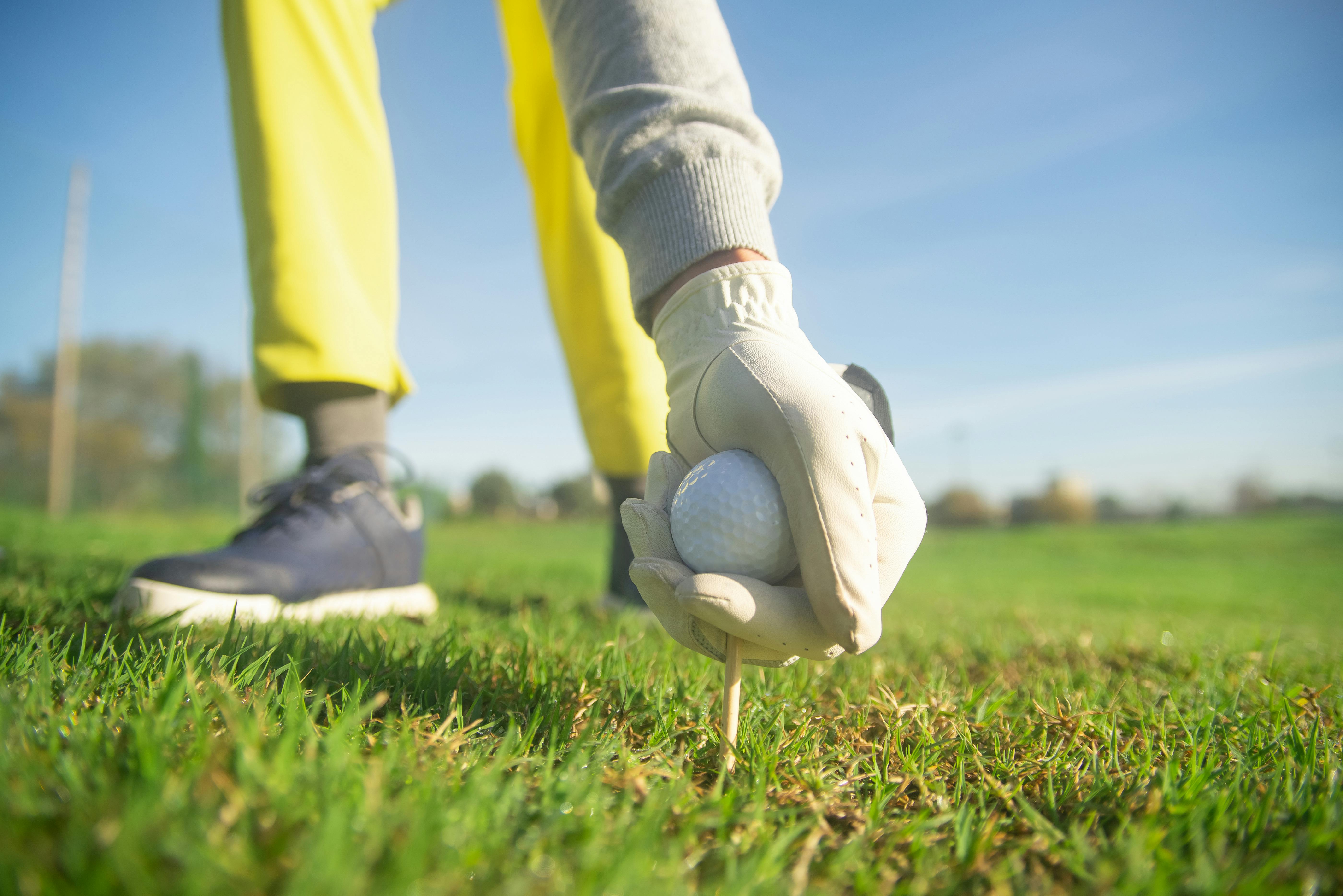What Hand Do You Wear A Golf Glove On

Golf is a sport that requires a great deal of precision and dexterity. One of the most important pieces of equipment in golf is the golf glove. Wearing a golf glove on the correct hand is an essential part of the game, as it helps provide grip and control while swinging. This article will discuss which hand to wear a golf glove on and why it matters.You should wear a golf glove on your non-dominant hand. This is typically your left hand if you are right-handed and your right hand if you are left-handed. Wearing the glove on your non-dominant hand will help to provide you with a better grip on the club.
Types of Golf Gloves
Golf gloves come in many styles, materials, and sizes. The most common type of golf glove is the Cabretta leather glove, which is made from soft sheepskin leather. This type of glove provides excellent feel and grip on the club and is very durable. Other materials used for golf gloves include synthetic leather, neoprene, and mesh. Synthetic leather gloves are less expensive than Cabretta leather gloves and provide good grip and durability. Neoprene gloves are lightweight and breathable but may not provide as much grip as other types of gloves. Mesh gloves are also lightweight and provide good grip but can be easily torn or damaged if not cared for properly.
Golfers should also consider the fit when selecting a golf glove. The right fit will ensure that the glove fits snugly on your hand without being too tight or loose. It should also provide good support to your wrist so that you can maintain a consistent swing. Different sizes available include small, medium, large, extra large, and double extra large.
No matter what type of golf glove you choose to wear, it’s important to keep it clean in order to maintain its performance and longevity. After every round of golf, remove the dirt with a damp cloth or brush and store in a cool dry place away from direct sunlight when not in use.
What Are the Benefits of Wearing a Golf Glove?
Wearing a golf glove can provide a number of advantages to golfers of all levels. The most obvious benefit is improved grip on the club, allowing for more consistent shots and greater accuracy. A good-quality glove also provides protection from blisters and abrasions, which can occur from the friction generated when gripping the club. Additionally, many golf gloves are designed to absorb moisture, helping to keep hands dry even in humid conditions. This helps ensure that your hands won’t slip off the club during your swing. A golf glove also helps reduce the impact of shock during each shot, providing more comfort for the golfer and reducing fatigue during long rounds of play. Finally, some golf gloves are designed with special features such as strategically placed seams and padding to improve grip and reduce hand fatigue.
Overall, wearing a golf glove is an easy way to enhance your game while protecting your hands from blisters and abrasions. Whether you are a beginner or an experienced golfer, wearing a glove can help you get the most out of your game by providing improved grip, increased comfort and better shock absorption.
How Do I Put on a Golf Glove Properly?
Putting on a golf glove properly is an important part of playing golf. If you don’t have the right fit or put it on incorrectly, you can end up with blisters and calluses that can make playing golf very uncomfortable. The good news is that putting on a golf glove is easy and only takes a few seconds to do.
The first thing you need to do is make sure the glove fits correctly. When choosing a glove, make sure it fits snugly but not too tight so your hand won’t be restricted from movement while you are gripping the club. If the glove is too tight, it will constrict your hand and reduce your ability to swing properly.
Once you have the correct size of glove, it’s time to put it on. Start by putting your hand in the palm side of the glove and then pulling outwards until the fingers are in their designated places in the glove. Then slide your fingers into the finger pockets until they are comfortable. Make sure that all of your knuckles are lined up correctly with each pocket so they have room to move freely while swinging the club.
Next, take hold of both sides of the cuff and pull them together until they meet snugly around your wrist area without being too tight or loose. Once this is done, take hold of both thumbs and press them firmly against each other to get a good grip on the club when swinging. This will ensure that your grip stays strong throughout your swing and gives you more control over the ball.
Once everything is in place, adjust any excess material as necessary and check for any wrinkles or bunching in the material that could cause discomfort while playing golf. This will help ensure that nothing gets in between you and a great game!
With these simple steps, you should now be able to put on a golf glove properly with no problems! Just remember to get one that fits snugly but not too tight so you can still swing comfortably, line up all of your knuckles correctly with their respective pockets, pull together both sides of the cuff securely around your wrist area, press both thumbs firmly against each other for better grip control when swinging, and adjust any excess material if necessary before hitting those balls!
Should Left-Handed and Right-Handed Players Wear Different Golf Gloves?
When it comes to playing golf, the equipment you use plays a major role in your performance on the course. One of the most important pieces of equipment to consider is the golf glove. Golf gloves are designed to help keep your grip secure while playing and can also provide comfort and protection against moisture. While there is no definitive answer as to whether left-handed and right-handed players should wear different golf gloves, there are some factors to consider when making a decision.
The main difference between gloves designed for left-handed players and those for right-handed players is in the grip pattern. Left-handed gloves feature a reversed pattern of grooves on the palm area, while right-handed gloves have a standard pattern. This difference allows for better grip and control when swinging a club from each side. For some players, this makes wearing a glove designed specifically for their dominant hand an ideal choice, as it can improve their game.
Another factor to consider is the size of the glove. Generally speaking, left-handed players will need larger gloves due to their larger hands, while right-handed players will require smaller gloves. This is because most manufacturers design their gloves with an average size in mind, which means that lefties may find that regular sizes are too tight or uncomfortable for them to wear properly. It’s also worth noting that some brands offer sizes specifically designed for either left or right handed golfers, so be sure to check before making your purchase.
Finally, it’s important to think about how often you play when deciding which type of glove is best for you. If you’re an occasional golfer who only plays once or twice a year, then having two separate pairs of gloves may not be necessary; however, if you play more regularly then having both types could be beneficial in terms of comfort and performance.
Overall, whether or not left-handed and right-handed players should wear different golf gloves depends on personal preference and playing style. Those with larger hands may find that wearing tailored gloves specifically made for their dominant hand improves their game; however, those who aren’t serious about golf may find that one pair of regular sized gloves suits them just fine. Ultimately, it’s up to each individual player to decide what works best for them on the course.

Factors to Consider When Choosing a Golf Glove
Choosing the right golf glove is an important decision for any golfer. The right glove can help you improve your performance and make your game more enjoyable. It’s important to consider several factors when selecting a golf glove, including fit, material, and grip.
Fit is an essential factor when choosing a golf glove. The glove should fit snugly but not be too tight or too loose. It should also feel comfortable and allow for proper range of motion in the fingers. Your choice of material can also affect how the glove performs and feels. Leather gloves are usually considered to be the most durable and provide the best grip, while synthetic materials are more lightweight and breathable.
Grip is also an important factor to consider when selecting a golf glove. A good grip will help you maintain control over your club while swinging, making it easier to hit accurate shots. Choose a material that provides sufficient traction without being too sticky or slippery. Different materials have different levels of grip, so it’s important to determine which material works best for your playing style and needs before making a purchase.
Finally, consider the price when selecting a golf glove. Different materials come with different price tags, so it’s important to find one that fits within your budget without sacrificing quality or performance. It’s also worth investing in higher-end gloves if you want something that will last longer and provide better performance on the course.
Caring for Your Golf Glove
Taking care of your golf glove is an essential part of improving the longevity of the product. It is important to pay attention to how you clean and store your glove, as this can impact the life of the glove. Proper care will extend the life of your glove, so it is important to take the time to look after it. Here are some tips on how to care for your golf glove:
1. Clean your golf glove frequently. Dirt and sweat can damage the leather, so it is important to clean it regularly. Use a mild soap or detergent with lukewarm water and gently scrub both sides of the glove with a soft bristle brush or cloth.
2. Hang or store your golf glove in a cool, dry place when not in use. Make sure that you do not store it in direct sunlight or near any other heat sources, as this can cause cracking and fading over time.
3. Apply leather conditioner to keep your golf glove soft and supple. Use a quality conditioner specifically designed for leather gloves, as this will help protect against cracking and maintain flexibility in the material over time. Apply conditioner every two weeks or as needed.
4. If your gloves become wet, make sure you remove them from your hands immediately and hang them up to dry completely before putting them away in storage or for another round of golfing. Wet leather can become stiff and brittle if not cared for properly, so make sure you give them ample time to dry out completely before storing them away again.
By following these tips, you can ensure that your golf gloves last longer and perform better for many rounds of golfing to come!
Is It Better to Wear One or Two Golf Gloves While Playing?
When it comes to playing golf, one of the most important decisions a golfer needs to make is whether to wear one or two gloves. While there is no definitive answer, the debate over which option is best has been ongoing for years. On one side, some golfers feel more comfortable and secure with two gloves, believing that the extra grip will provide better control of the club. On the other hand, some golfers prefer wearing just one glove because they believe it helps them maintain a better connection with their clubs. Ultimately, it is up to each individual golfer to decide which option works best for them.
One advantage of wearing two gloves is that they can help improve a golfer’s grip on their clubs. This can be particularly useful when playing in wet conditions as the extra layer of protection can prevent slippage. In addition, having two gloves on also provides additional cushioning on the hands and wrists which can reduce fatigue during long rounds.
However, some players may find that wearing two gloves can actually hinder their performance on the course. Wearing two gloves may cause a lack of feeling and feedback from the club as there is an extra layer between your hands and your clubs, making it difficult to accurately judge how hard you are swinging or how much power you are generating with each shot. Furthermore, having two gloves on can cause additional drag during your swing which could potentially lead to slower clubhead speed and reduced accuracy.
Ultimately, it’s important for golfers to experiment and find out what works best for them when deciding whether to wear one or two gloves while playing golf. If you tend to have sweaty hands or play in wet conditions often then using two gloves may be beneficial as they will provide a better grip and more comfort during your round. However, if you prefer feeling more connected with your clubs then just using one glove may be preferable as it will give you better feedback from your shots while not sacrificing too much grip stability.

Conclusion
Golf gloves are an essential part of any golfer’s kit. They provide a great way to improve your grip on the club and help prevent blisters and calluses from forming. The glove should be worn on the non-dominant hand for right-handed golfers, and the dominant hand for left-handed golfers. It is important to select a glove that fits snugly and is made of high quality materials to ensure optimal performance. With a good fitting glove, you can enjoy better control over your swing and optimize your game.
Overall, wearing a golf glove on the correct hand can give you better control of the club, help reduce slippage, improve your grip, and reduce wear and tear on your hands in general. With this information, you can now make sure you are wearing your golf glove correctly when playing the game you love!
